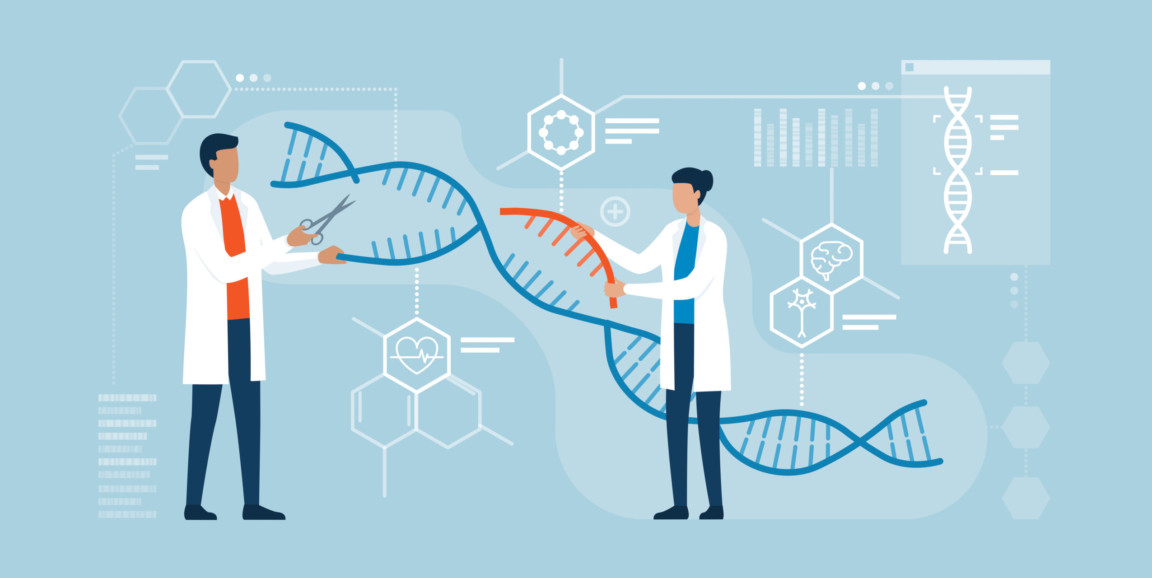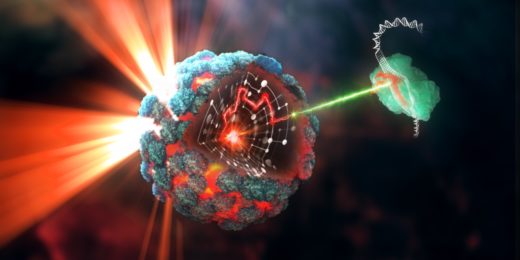About 1% of babies are born with a genetic heart condition, known as a congenital heart defect, which has no good treatment. But what if one day, a baby born with a faulty heart could be treated at birth, before the condition manifests?
In this futuristic scenario, a clinician could administer a shot that wipes the genetic issues clean out of the child's DNA. The idea is, with the impressive power of the gene editing tool CRISPR-Cas9, a life-altering or life-shortening disease could be nipped in the bud before a child leaves the hospital.
While that vision is still one of the very distant future (if ever), scientists think treating and understanding heart conditions through CRISPR holds great promise. Conditions such as rapid or irregular heart rates, cardiomyopathies (wherein the heart is unable to pump blood efficiently) and high blood cholesterol are ideal for CRISPR-based therapies, as they often have genetic roots, according to cardiologist and director of the Stanford Cardiovascular Institute, Joseph Wu, MD, PhD.
Scientists use CRISPR to help characterize gene variations that may carry risk for heart disease. By breaking or fixing suspicious gene variants with CRISPR in cells, researchers can understand how the gene affects heart function and whether the gene is benign or harmful. But more and more, CRISPR is making its way into the cardiology clinic, such as in a new undertaking to employ CRISPR to edit faulty genes that give rise to high cholesterol and increase risk for liver and heart disease.
"Treating cardiac disease by CRISPR in patients is still far away," said Wu. "But it would be great if we could treat genetic cardiac diseases, including dilated cardiomyopathy, hypertrophic cardiomyopathy and other congenital heart defects, by CRISPR in the future."
Wu has high hopes for editing out cardiac diseases. He and his lab colleagues are using the tool to decipher what goes wrong when cardiovascular diseases strike -- and, perhaps one day, to prevent them.
Getting to the heart of it
Wu has turned to CRISPR to understand hypertrophic cardiomyopathy, a type of cardiomyopathy that causes the heart muscle to thicken, impeding its ability to pump blood.
Certain genes, when mutated, give rise to the condition. But not all have been identified, so Wu and his team are on a quest to uncover the genetic culprits that lead to this disease. As part of their investigation, the team zeroed in on a potentially disease-causing genetic variant, flagged by a database that tracks gene errors that could result in harmful conditions. The question was, how could researchers know if the mutation in question was dangerous to the heart?
Using cells from a person who carried the mutation, the researchers set up a model of the stem-cell-derived heart cells harboring the variant. To see if the mutation caused problems in heart cells, the researchers used CRISPR to "fix" the mutation in question in some cells, effectively making those heart cells healthy again, but left the mutation intact in others. They then compared the two cell variations -- one that was corrected and one that wasn't -- finding that each one was equally healthy, an indication that the mutation in question was benign.
Finding the culprit
While part of Wu's lab explores the underpinnings of hypertrophic cardiomyopathy, another group is studying a heart rhythm condition, known as long QT syndrome, that causes hasty heartbeats and, sometimes, abrupt death. In one study, the team took cells from a patient diagnosed with the syndrome who carried a questionable mutation in a gene connected to the condition. Again, the goal was to decipher if the mutation was causing the disease, or was just a genetic bystander.
Similar to the hypertrophic cardiomyopathy study, they extracted blood cells from a patient carrying the suspicious mutation to generate heart muscle cells. Then, using CRISPR, the researchers corrected the faulty gene in some, but not all, of the cells. In parallel, the team experimentally changed healthy heart cells, adding the mutation to see how the cells faired.
Using a technique that measures electrical impulses in cells, they found that mutant heart muscle cells from the patient acted strangely -- the pattern of their electrical activity, which powers a beating heart, was abnormal. When exposed to a drug known to provoke irregular heart rhythms, the mutant cells also more easily fell into an abnormal heartbeat, compared with healthy heart cells.
Importantly, Wu noted, when the team edited the heart cells to correct the mutation, the cells' rhythm was normal, confirming that the mutation could be causing the condition.
To edit, or not to edit?
Despite the promise, therapeutic genome editing for cardiovascular conditions has its downsides -- including off-target edits as well as low "efficiency," meaning the edits don't occur in all the cells they are supposed to. But that doesn't mean researchers are giving up hope.
"Newer CRISPR tools with higher efficiency or more advanced features are being developed every year," said Wu. "Genome editing in the heart may become feasible in the future with improved delivery methods, increased efficiency and enhanced safety."
Photo by elenabsl






